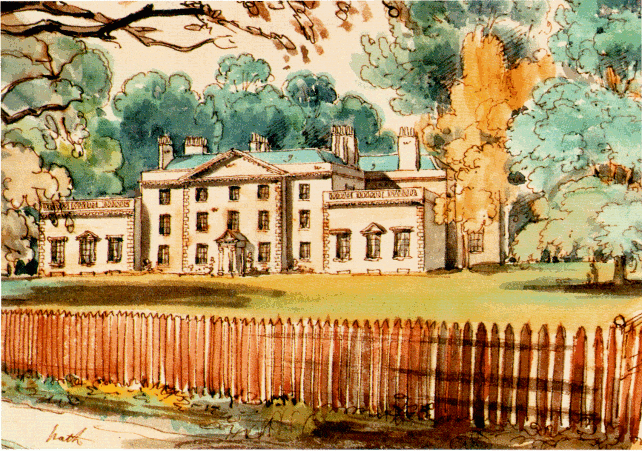Researchers are developing a new project to commemorate 18th-Century Streatham Resident, Hester Thrale Piozzi (1741-1821), and uncover what life was like at the lost Streatham Park House. The new research project, ‘Heritage without a House: Remembering Hester Piozzi’s Streatham’ will focus on Streatham Park House, using Hester’s own writings, documents about the estate, as well as seeking out other stories connected to the estate including the staff who kept the house running and the many guests who visited. The project is run by Dr Katherine Fennelly, an archaeologist from the University of Sheffield, and Dr Cassie Ulph, a literary historian from the University of Manchester. Cassie and Katherine want to build up a picture of the traces of the estate with the help of the local community, whose memories and local knowledge will help us understand Hester’s local legacy.
They will be running a drop-in session where local people can find out more about the project and get involved in mapping the lost house. Residents are invited to come along and chat about the project over tea and cake and find out how to identify and record archaeological features in their gardens and public spaces through a technique called ‘field-walking’ to build up a community-based map of the area as the first stage of this new research project.
Hester came to Streatham as the wife of brewer Henry Thrale, whose father, Ralph, built the Streatham Park house in 1730. As mistress of Streatham Park, she hosted literary and artistic celebrities such as Samuel Johnson, Joshua Reynolds, and Frances Burney, but her own literary ambitions took a back seat during her first marriage while she ran the household, supported her husband’s parliamentary efforts, and educated their children. After Henry’s death, she married Italian musician, Gabriel Piozzi. Hester lived at Streatham periodically during this time but mainly she managed the estate at a distance, as part of her daughter’s inheritance. Streatham held mixed memories for Hester, of her restrictive first marriage, but also of a brilliant intellectual circle and social life. It was where she met Dr Johnson, of whom she wrote a popular posthumous biography.



Cassie specialises in women’s writing of the late-18th and early 19th centuries and has been researching Hester’s life and work for over ten years. She has given talks about her to local groups and recognises the appetite to know more about Hester, but the lack of a site can be perceived as a challenge. She said, ‘as a literary historian I have always been interested in Hester’s relationship with Streatham because, although she was a prolific diarist and letter writer during her first marriage, most of her published work dates from after her first husband’s death but is still heavily informed by the memory of those ‘Streatham years’.”
Although Hester is known of locally, because Streatham Park house itself is lost to us, there’s no focal point to connect her life and experiences to the contemporary community in Streatham. But the house and its residents are still part of the shared local memory of the community, and this project wants to see what traces remain in the local landscape and the memories passed down through residents.
When Cassie talked to Katherine about the lack of an ‘Author’s House’ the project really began to take shape: ‘The lack of a physical building seems like a limitation, but it actually opens up lots of possibilities and other creative ways of mapping the space’ Katherine says. ‘As a post-medieval archaeologist, a lot of the buildings I research exist through documents rather than a preserved physical site. The material record is gone, but there are other sources of evidence, from archival documents and narrative descriptions to the ways in which the site has been shaped through cycles of use. Even though Streatham Park house no longer stands, it has an impact on local geography and is part of the heritage of the area. In the life cycle of places, usages change over generations, and that’s a natural part of how urban areas develop, but traces of earlier heritage exist in everything from the local archive to people’s memories of the space, and that’s what’s so exciting about this project.’
Cassie and Katherine will be at Streatham Park Bowling Club on Friday 10 June from 2pm to 7pm armed with tea, cake, and maps, and look forward to meeting local residents for a drop-in heritage session! The session will begin with a brief introduction to the project at 2pm, but residents are invited to drop in for a chat at any point to find out more, share their knowledge of the local landscape and engage in some general Thraliana over tea and cake.
This event is supported by The University of Sheffield Arts & Humanities Knowledge Exchange Fund.
Dr Cassie Ulph, Dr Katherine Fennelly, The Streatham Society
